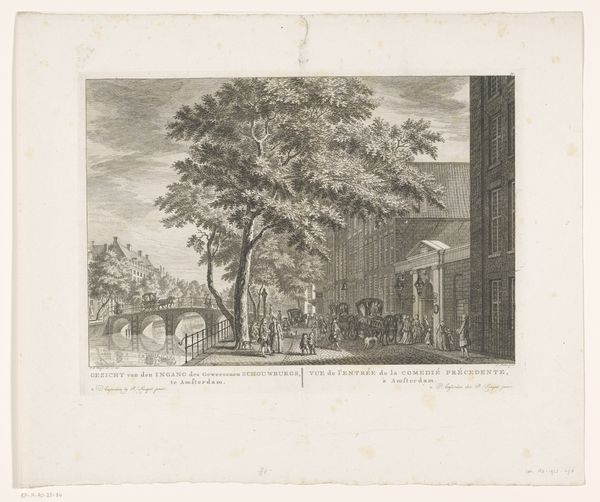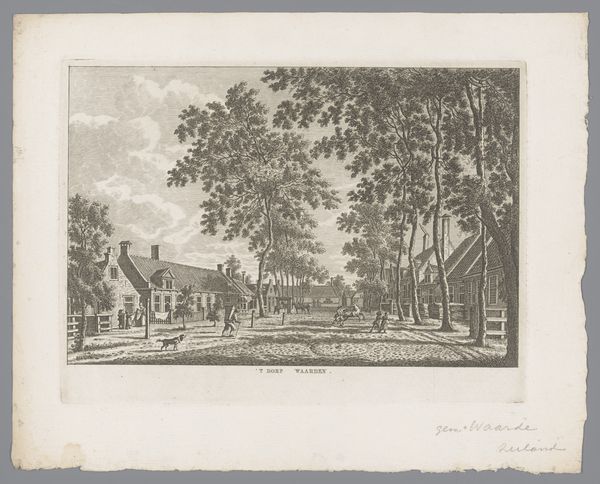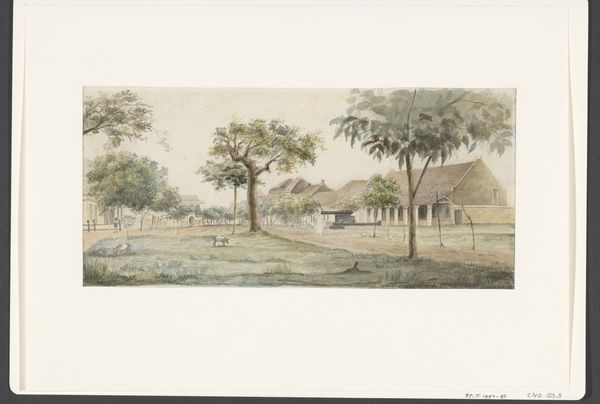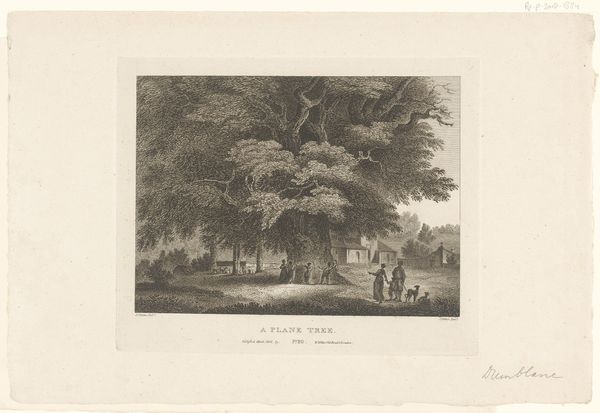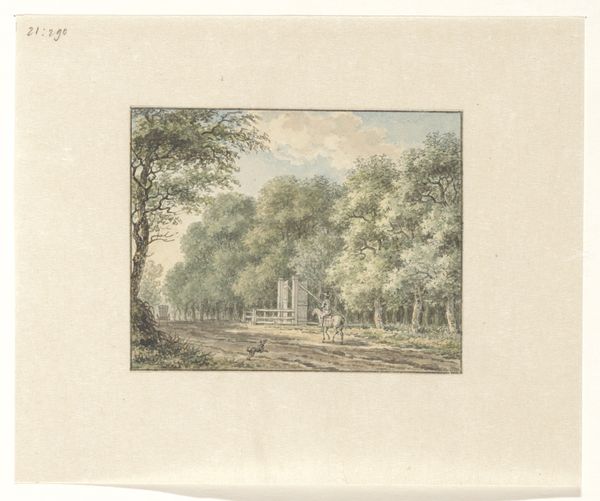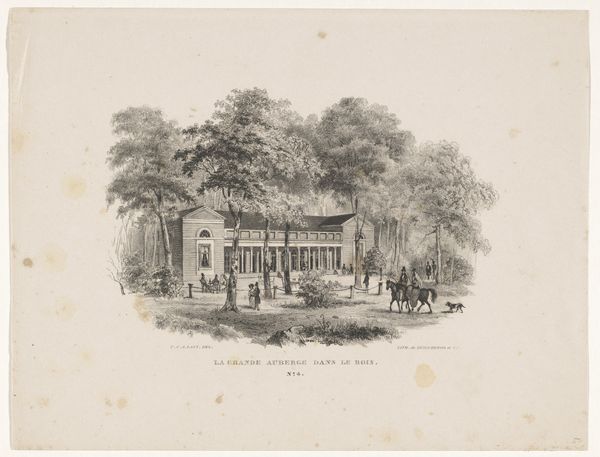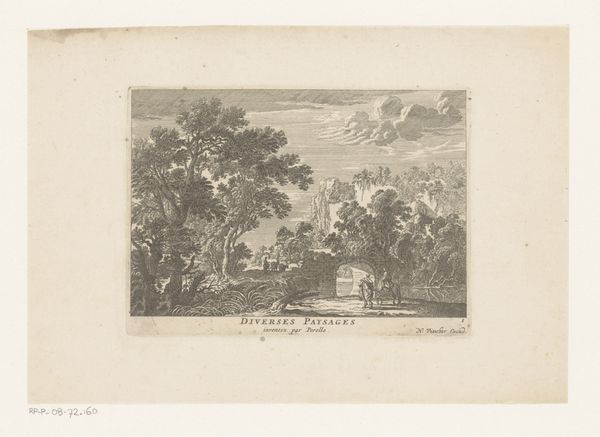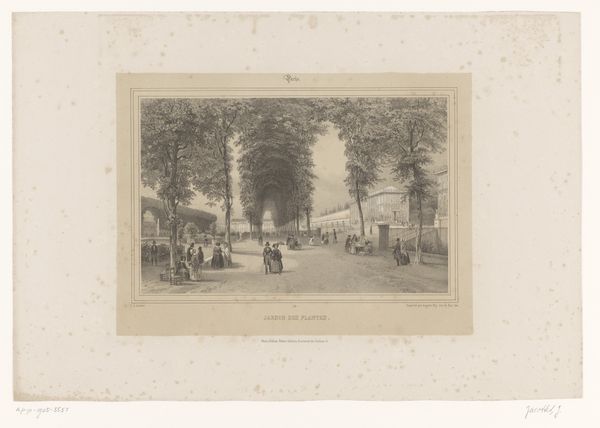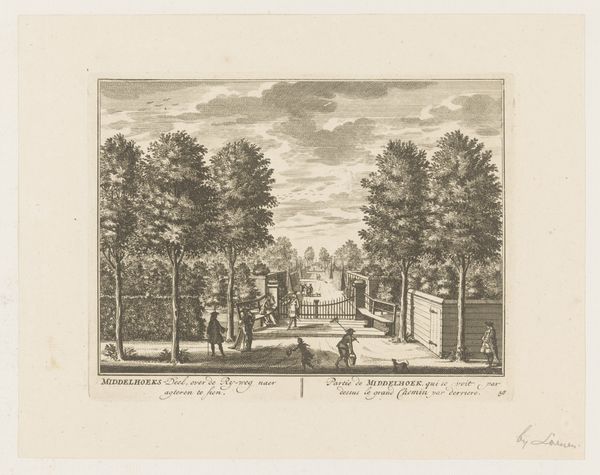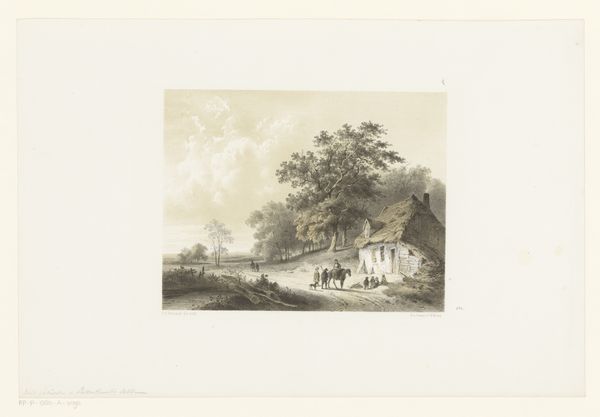
drawing, etching, plein-air, paper, watercolor
#
drawing
#
dutch-golden-age
#
etching
#
plein-air
#
landscape
#
paper
#
watercolor
#
15_18th-century
#
cityscape
#
watercolour illustration
#
genre-painting
#
watercolor
Dimensions: height 165 mm, width 240 mm
Copyright: Rijks Museum: Open Domain
Editor: So this is "Straat in Amstelveen," an etching and watercolor on paper by Carel Frederik Bendorp, made sometime between 1786 and 1792. It’s such a detailed snapshot of a time gone by! What really strikes me is how this isn't just a pretty landscape; it feels like a peek into the everyday lives of people then. How do you read this piece? Curator: It's interesting you say that, because as a historian, that's exactly where my mind goes. This piece, to me, highlights the intersection of public life and artistic representation during that era. The level of detail – in the architecture, the clothing, the activities of the figures – suggests a deliberate attempt to capture a specific social reality. Have you considered how the rising Dutch middle class and their values might have shaped artistic tastes during this time? Editor: I hadn’t directly thought of that, but now that you mention it, the emphasis on seemingly ordinary scenes does suggest a celebration of middle-class life. I wonder if choosing Amstelveen, not Amsterdam itself, also says something about shifting centers of power and interest? Curator: Exactly! Provincial settings were gaining traction as sites of cultural and economic growth, challenging Amsterdam’s historical dominance. And, how do you think the art market and exhibition culture impacted the kind of scenes artists like Bendorp chose to depict? Editor: Oh, that's a great point! They'd have to create works that appeal to buyers and wider audiences at exhibitions, maybe something easily accessible and relatable to them? Perhaps this kind of realistic portrayal aimed to establish a sense of national identity, moving away from purely religious or mythological subjects? Curator: Precisely! The artwork then becomes a tool for shaping social narratives and projecting certain values onto the public sphere. Looking at it this way helps us understand the piece as more than just a landscape; it's a reflection of its time. Editor: This completely reframes how I see the work! I hadn’t considered the economic and political undertones, only the superficial charm of the scene. Thanks for this!
Comments
No comments
Be the first to comment and join the conversation on the ultimate creative platform.

